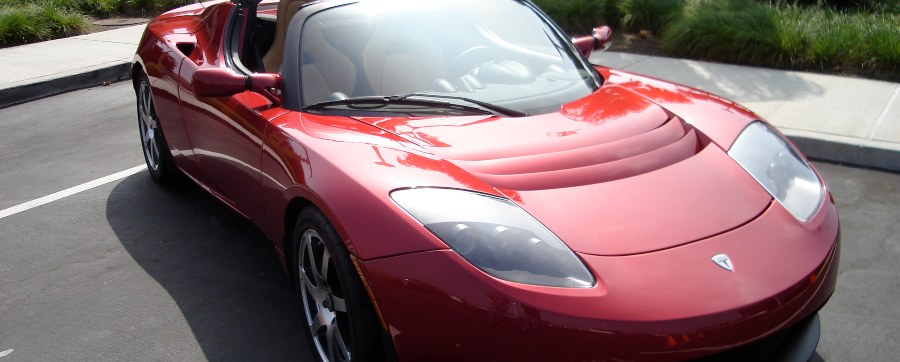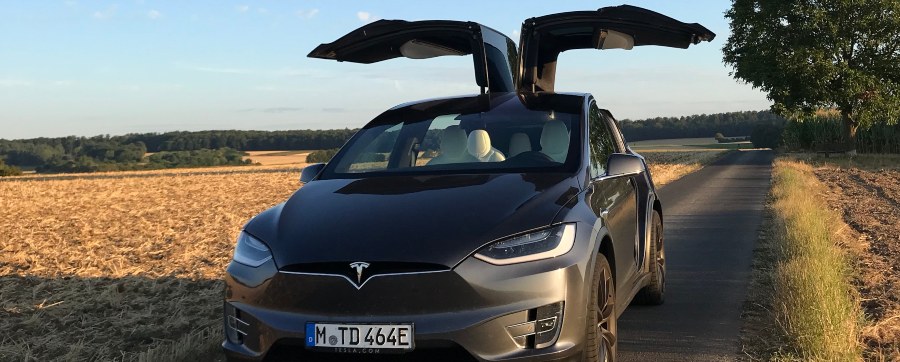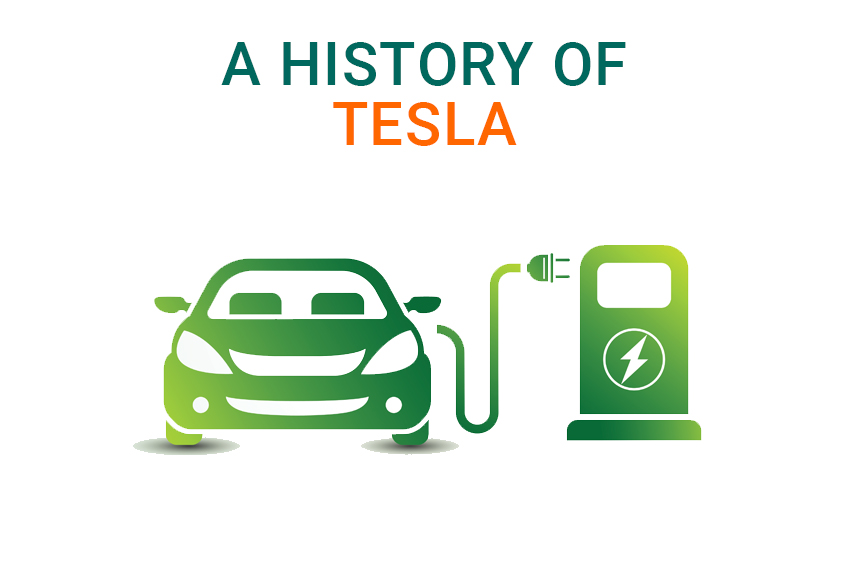Tesla is a relatively new company when compared to the Renaults and Citroens of the motoring world. However, it has also completely redefined the way that the world sees electric vehicles.
After something of a shaky start, Tesla has managed to establish itself as a company at the forefront of electric vehicle innovation and renewable energy.
Despite having a shorter history than many other car manufacturers, its story is an interesting one. Fires, lawsuits, constantly moving launch dates and of course, the bulletproof glass that broke when a ball was thrown at it during a press conference.
Tesla’s story is anything but boring!
When was Tesla founded?
Tesla was founded in 2003 by Martin Eberhard and Marc Tarpenning, both of whom were working as engineers in California’s Silicon Valley. When they created the brand, named after the inventor Nikola Tesla. Eberhard and Tarpenning’s plan was to prove that electric cars were better than petrol by developing an electric sports car.
Using Nikola Tesla’s name for its brand was no coincidence. As the designer of the modern alternating current (AC) electrical supply system, the Roadster was built using an AC battery supply.

When did Elon Musk become CEO of Tesla?
Tesla was founded in July 2003, and until 2004, Eberhard and Tarpenning funded the company themselves. Eberhard served as the CEO with Tarpenning the CFO. However, after less than a year things changed.
In January 2004, Eberhard, Tarpenning and the third member of their team, Ian Wright, went looking for venture capital funding, it was at this point that they connected with Elon Musk, founder of PayPal. In February 2004, Musk contributed $6.5 million to Tesla’s Series A round of investment (which totalled $7.5 million) and was made chairman of the board of directors.
Musk took an active role in the company, overseeing the design of the roadster to the smallest detail, however, he wasn’t involved in the day-to-day functions of the business itself.
By 2009 both Eberhard and Tarpenning had left Tesla for pastures new and Musk had assumed the position of CEO and product architect.
As it stands, Elon Musk is the longest-serving CEO of a car manufacturer in the world.
Who invested in Tesla?
By May 2009, Tesla had raised $187 million and delivered 147 all-electric vehicles to early investors. Musk had contributed over $70 million of his own money to the business. It was at this point that Daimler AG, the parent company of Mercedes-Benz acquired an equity stake in Tesla for a reported $50 million. The stake was less than 10% of the company.
This investment saved Tesla from collapse and just a month later the company was approved to receive interest-bearing loans from the US Department of Energy to the tune of $465 million. This payment was part of the Advanced Technology Manufacturing Loan Program and Tesla ended up being the first car manufacturer to completely pay it back, with the final payment (plus $12 million in interest) being made in May 2013.
What was Tesla’s first car?
In 2008, Tesla released its first fully-electric car, the fully-electric Roadster. When tested the vehicle reached 245 miles on a single charge and had a top speed of 125 miles per hour. Made of carbon fibre and built on a chassis that was based on the Lotus Elise. In fact, in 2005, Tesla and UK-based manufacturer Lotus came to an agreement wherein Lotus provided advice on designing and developing a vehicle.

Though the Tesla Roadster didn’t get delivered to customers until 2008, development of the vehicle started long before that. Musk was even presented with the Global Green product design award in 2006 for his design of the Tesla Roadster. The design was so innovative that it was also awarded the Index Design award in 2007.
The last Roadster was sold in 2012, and in 2017, Elon Musk announced a new era with the Roadster, with the vehicle set to make a comeback in 2020.
The new generation Tesla Roadster is set to have a 620-mile range, a top speed of 250 miles per hour and the ability to go from 0-60 in a very impressive 1.9 seconds.

When was the Tesla Model S launched?
Designed by a team led by a designer who previously worked for Mazda, the Model S was first announced in 2008 and previewed in 2009. It was codenamed WhiteStar while in the development stage.
The first models of the 40kWh Model S were delivered to customers in the US in June 2012, with the delivery of the 60kWh models delayed until the first part of 2013. A total of 2,650 Model S cars were delivered in 2012.
The next countries that took delivery of the Model S were Norway, The Netherlands and Switzerland in August 2013. Norway and Switzerland soon became Tesla’s largest per capita market (according to Elon Musk).
Delivery of right-hand models to Australia, Hong Kong, Japan and the UK didn’t start until 2014, and in October of that year, sales of the Model S surpassed 50,000. Sales were so good that it was named the second best-selling electric vehicle globally, after the Nissan Leaf.
By the end of 2018, the Model S had sold over 260,000 units globally. The largest market for the saloon is the US, followed closely by China and then Norway.
When was the Tesla Model X launched?
When you think of Tesla’s crossover SUV the first thing that comes to mind is the gull-wing doors (in the US referred to as falcon-wing) that open vertically, giving the Tesla Model X a very different appearance to most SUVs on the market.
The Model X was initially announced as having a launch date at the beginning of 2014, however, in February 2013, Tesla was forced to announce that delivery of the crossover had been pushed back until the end of 2014 in order that they could deliver on their promised 20,000 unit target for the Model S.
The delivery date of late 2014 was not to be, however, as the company experienced problems with the door design and the SUV’s ability to haul a trailer without overheating.
At the very end of the third quarter of 2015 (29 September), the first Model X SUVs were delivered to their new owners.

Though production and delivery of the Model X were lower than had originally been anticipated in 2016, this was blamed on the fact that Tesla was having issues with parts shortages. This soon picked up and by the end of 2016 over 25,000 Tesla Model Xs were on roads around the world.
Sales were so good for the Model X that in September 2016 the crossover SUV was both the best-selling electric car and the best-selling car overall in Norway.
The Model X is a practical and stylish crossover SUV and in April 2019 it was announced that a taxi company in Jakarta, Blue Bird is planning to replace all their existing premium taxis with the Model X.
When was the Tesla Model 3 released?
Unlike the previous models in the Tesla range, the Model 3 was announced on Twitter in 2014. It was unveiled to the public at a press conference from California in March 2016.
The concept for the Model 3 was initially announced in 2006 during an interview that Elon Musk had with Wired Science. In the interview, Musk stated that he intended the Model 3 to cost around $30,000 which would be affordable to almost everyone who could buy a new car. At the time of this interview, the Model 3 was listed in Tesla’s business plan under the code name BlueStar.
The reservation list for the Tesla Model 3 was created with three different stages, though all paid a $1,000 refundable deposit. Employees of Tesla and SpaceX were given the opportunity to reserve a Model 3. 10,000 employees signed up, receiving no discount. The next level of reservations was offered to people who already had a Tesla. It was felt that employees of the company and those who were already familiar with a Tesla model would be more tolerant of potential early production errors (as these had happened with the Model S and the Model X).
On launch day, March 31st 2016, it was announced that over 115,000 people had reserved their Tesla Model 3 and less than a week later this reservation number had risen to an incredible 325,000.
Having learned lessons from the issues that were experienced during the initial rollout of the Tesla Model X, Musk announced that they would delay delivery of the Model 3 to the second half of 2017. The first Model 3 was delivered to Musk himself on 7 July 2017.
Tesla experienced a bottleneck issue with the production of the Model 3, having initially committed to producing 1,500 vehicles in the third quarter of 2017, they produced just 260. These difficulties continued into the fourth quarter of the year. Deliveries were behind schedule, share prices fell and the 5,000 cars a week production promise that Musk made in 2016 was moved into March 2018.
Until early 2019, the Model 3 was only available to the US market, however, in February models began to export to mainland Europe and China. The first right-hand drive models went on sale in the UK in June 2019.
Since its launch, the Model 3 has become the most popular fully-electric car on the road, surpassing sales of the popular Nissan Leaf. It has won several awards and reached global sales of almost 525,000 by March 2020.
Not only is the Tesla Model 3 popular with electric car drivers, but it has also been awarded five stars for safety in the EuroNCAP tests, with the video of its safety test garnering over 1 million views on YouTube.

Tesla court case controversy
In the years since the company was founded, Tesla has been no stranger to controversy. So, what are the cases that have garnered the most inches in a newspaper column?
Tesla vs. Eberhard
In 2009, Martin Eberhard filed a lawsuit against Tesla and Elon Musk for slander, libel and breach of contract. However, Musk published documents that demonstrated Eberhard had been fired from Tesla by the board of directors. A judge in the California Superior Court struck down the claim made by Eberhard who asked to be declared as one of the two founders of the company.
A few months later the case was settled out of court with the outcome being Eberhard, Musk, Straubel, Tarpenning and Wright were all listed as co-founders of the company.
Tesla vs. Top Gear
In 2011, Tesla was unsuccessful when they attempted to sue BBC’s long-running car programme Top Gear for libel and malicious falsehood.
In the seventh episode of season 12 (which aired originally on 14 December 2008) Jeremy Clarkson was seen driving a Roadster around the Top Gear test track, complaining about a range of only 55 miles. The show then filmed workers pushing it into the garage, supposedly out of charge.
Tesla claimed that they provided two cars, one of which was ready to drive. They also claimed that neither car ever dropped to below 20% charge, and accused Top Gear of staging some of the footage for dramatic effect.
The court rejected the libel claim in March 2011, stating that no viewer of the show would be likely to compare the Roadster’s performance on the show with its real-world performance. Seven months later the malicious falsehoods claim was dismissed. Tesla appealed but that was ruled against in 2013. The courts stated that the episode of Top Gear had “not damaged Tesla’s reputation”.
Tesla vs. Fisker Automotive
In April 2008, Tesla sued Fisker Automotive alleging that the company had stolen designs and information relating to the production of hybrid and electric vehicles and was using that information to design their own electric car, the Fisker Karma. In November 2008, however, in a press release issued by Fisker Automotive, it was announced that an arbitrator had found in Fisker’s favour on all claims.
Tesla vs. Martin Tripp
In June 2018, Martin Tripp, an employee of Tesla, leaked information that Tesla was scrapping (or reworking) up to 40% of its materials at the Nevada Gigafactory. He was fired after confessing to leaking the information. Tesla filed a lawsuit against Tripp in Negavad accusing him of hacking the company and supplying sensitive information to anonymous third parties. There was a countersuit made by Tripp in the same month.
By the end of June 2018, Tesla had been granted several subpoenas which forced companies such as Google, Microsoft, Apple and others to surrender data that they were holding on Tripp’s behalf.
The case continued for two years and on 17 September 2020, the court ruled in Tesla’s favour, finding Tripp guilty of the charges made against him.
The future of Tesla
The future is interesting for Tesla, with several vehicles already in the works, though the most interestingly designed one will not be available in the UK.
By the end of 2022, Tesla’s range will spell out the suggestive S3XY thanks to the addition of the new Model Y. Unfortunately, the Cybertruck, which has garnered a great deal of interest globally due to its interesting body shape will not be available outside of the US due to its size – UK roads are much narrower than US roads. There is also concern about how it will perform in European and UK safety tests, specifically where pedestrian impact tests are concerned.
However, an increase in competition is on the horizon. Other, more established car manufacturers, such as Volvo, have committed to producing more electric vehicles which means that Tesla is going to be facing an increase in competition in the future. Which, of course, it has to prepare for.
In its short existence (so far), Tesla has made a huge impact on the automotive industry and has revolutionised the way we see electric cars and the future of motoring. Despite a rocky short history, we are sure that they will continue to pave the way for electric vehicles in the future.


